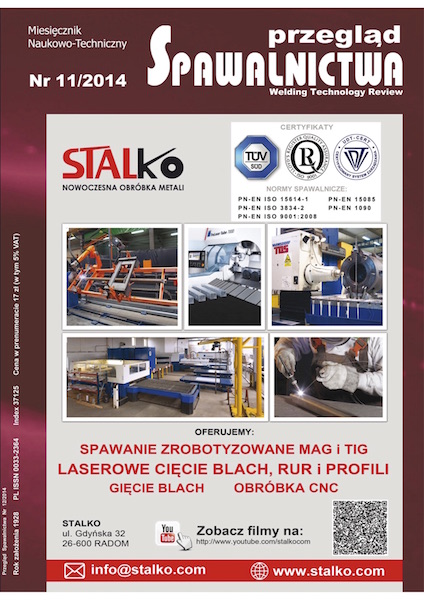Próbki szklane grawerowane laserowo jako wzorce dwójłomności akustycznej w badaniach ultradźwiękowych
Main Article Content
Abstract
W pracy opisano nowy sposób wykonania próbki o określonej anizotropii akustycznej, przydatnej do badania głowic ultradźwiękowych przeznaczonych do pomiarów dwójłomności akustycznej. Do wykonania próbek wykorzystano szklane bryły i podpowierzchniowe grawerowanie laserowe wymaganą w normach omawiających wzorce do ultradźwiękowych badań naprężeń w kołach kolejowych wartość dwójłomności uzyskano, stosując grawerowanie z podwojonymi, umieszczonymi w linii mikrouszkodzeniamu spowodowanymi działaniem lasera. Przedyskutowano również możliwości wykonania wzorca dwójłomności akustycznej ze stali, jak proponują to normy;
Paper describes a new method do produce a sample presenting determined acoustic birefringences, useful in ultrasonic nondestructive testing. To produce a given acoustic anisotropy glass block was used and subsurface laser engraving technique. Anisotropy required in standard dealing with ultrasonic stress evaluation in railroad wheels, was obtained using engraving double, aligned along one line, microcracks. Paper discusses also the feasibility of acoustic birefringence pattern manufac- turing of steel, as described in standards.
Downloads
Article Details
Creative Commons CC BY 4.0 https://creativecommons.org/licenses/by/4.0/
Welding Technology Review (WTR) articles are published open access under a CC BY licence (Creative Commons Attribution 4.0 International licence). The CC BY licence is the most open licence available and considered the industry 'gold standard' for open access; it is also preferred by many funders. This licence allows readers to copy and redistribute the material in any medium or format, and to alter, transform, or build upon the material, including for commercial use, providing the original author is credited.
References
J. Krüger, W. Kautek, M. Lenzner, S. Sartania, C. Spielmann, F. Krausz, "Laser micromachining of barium aluminium boro-silicate glass with pulse durations between 20 fs and 3 ps", Applied surface science, 127(29), 892-898, 1998.
